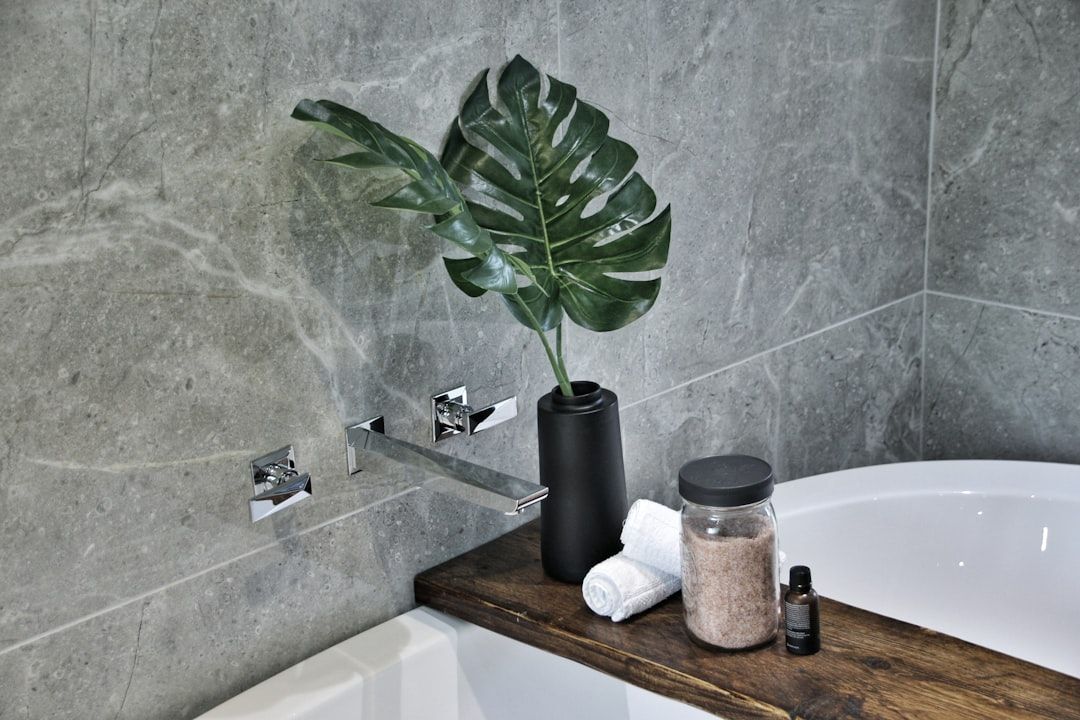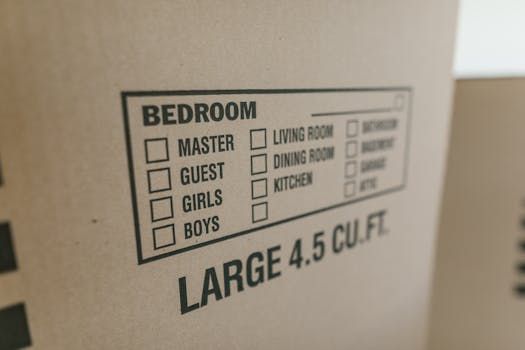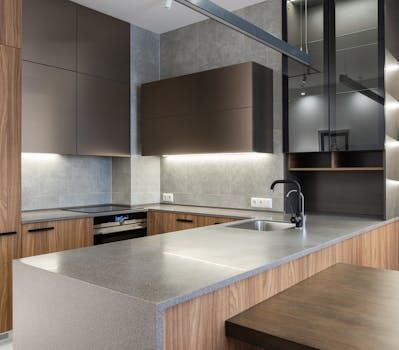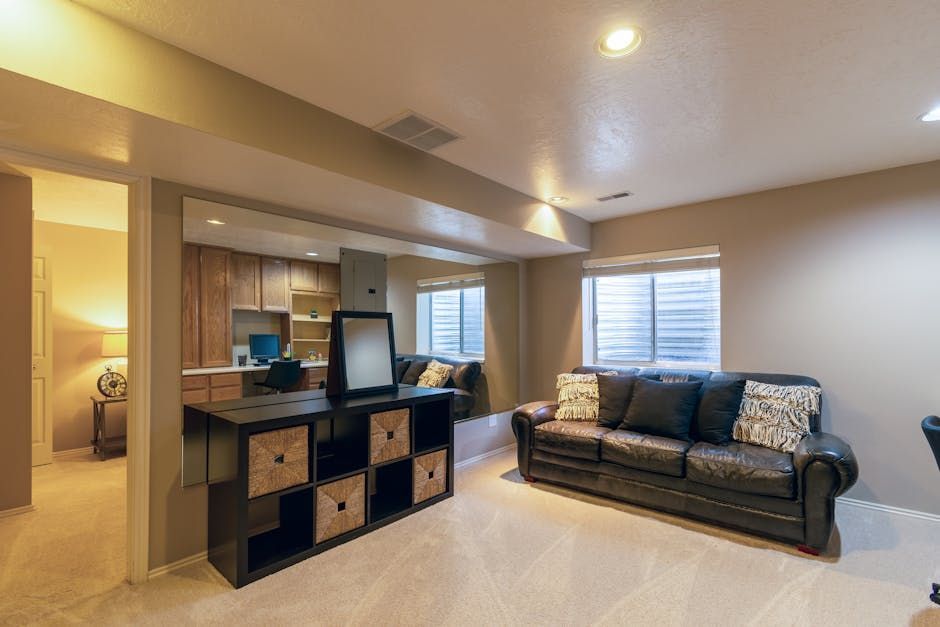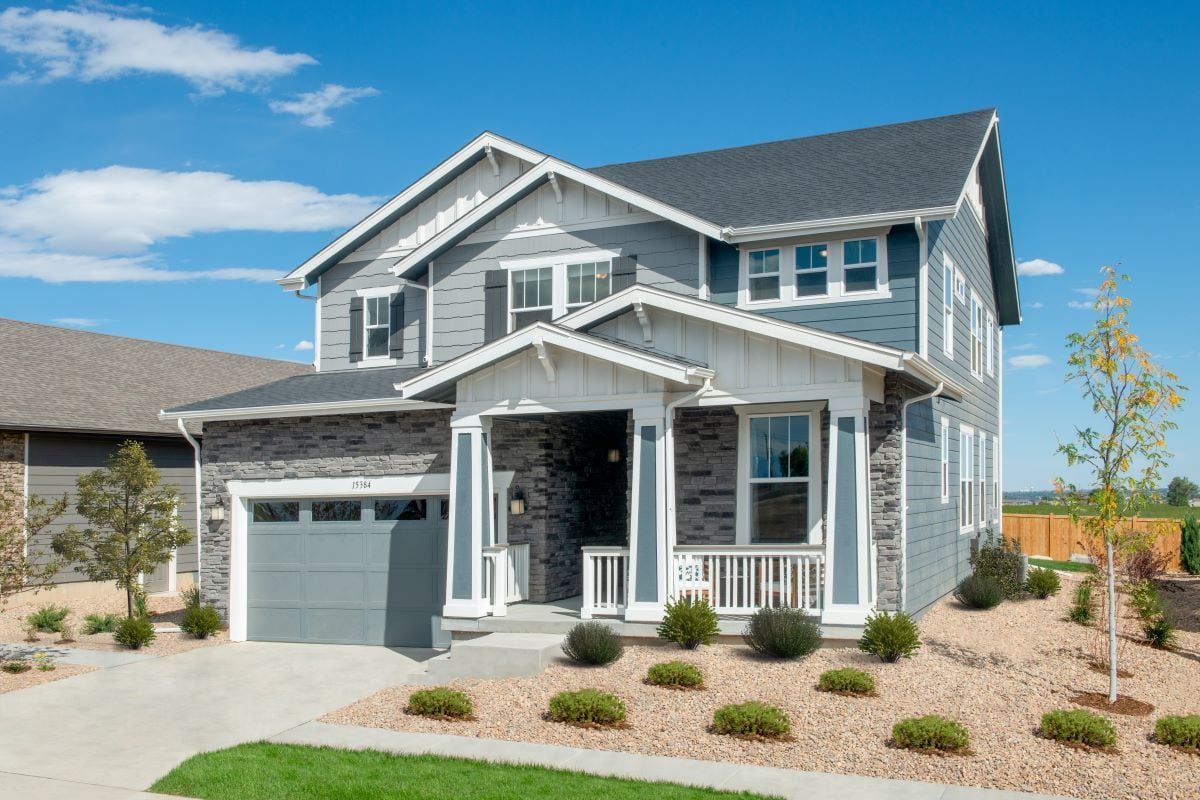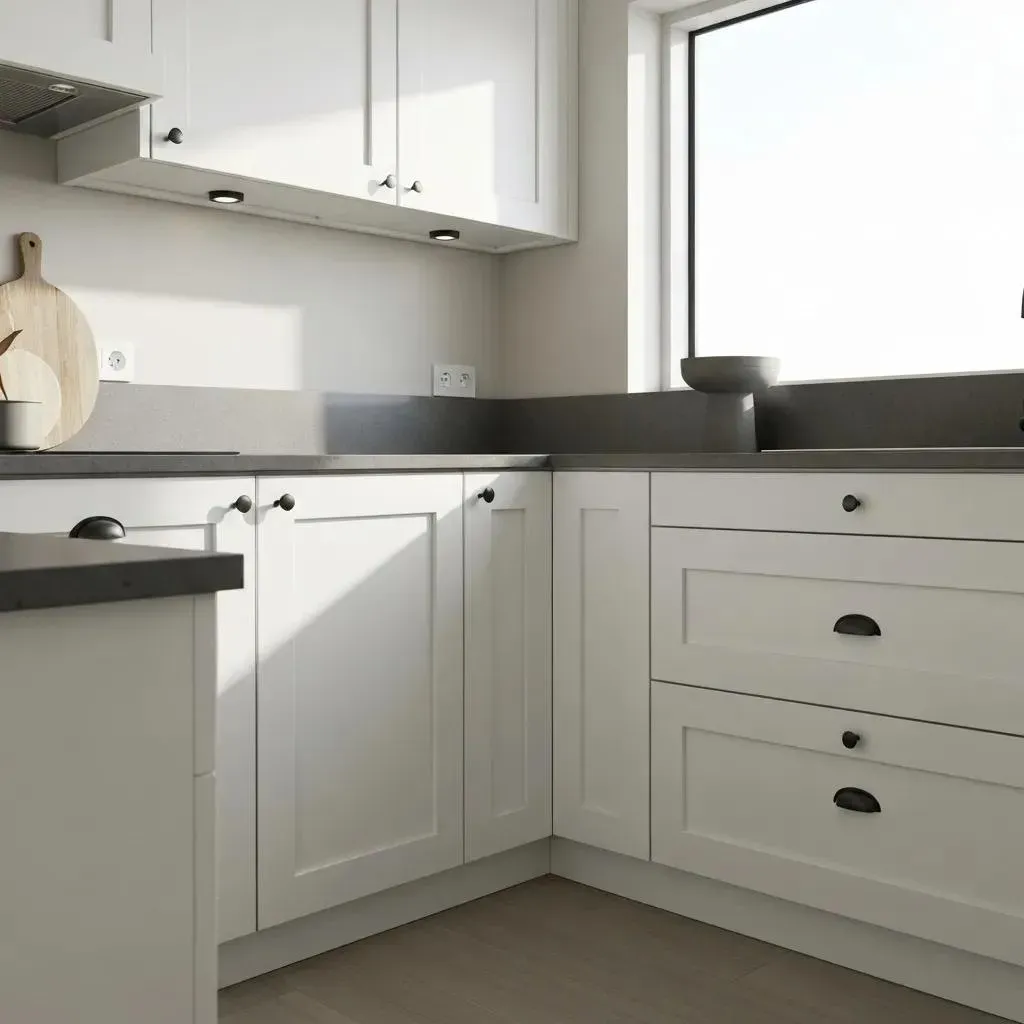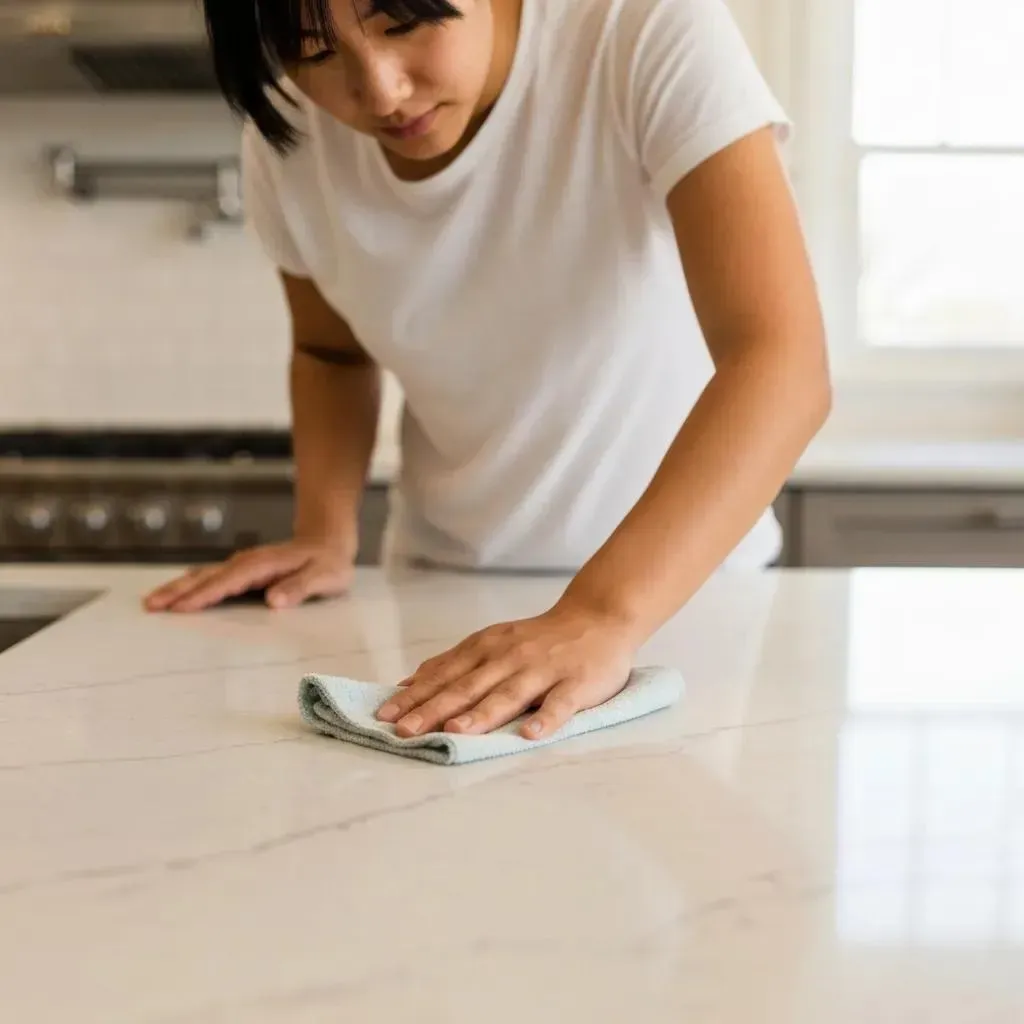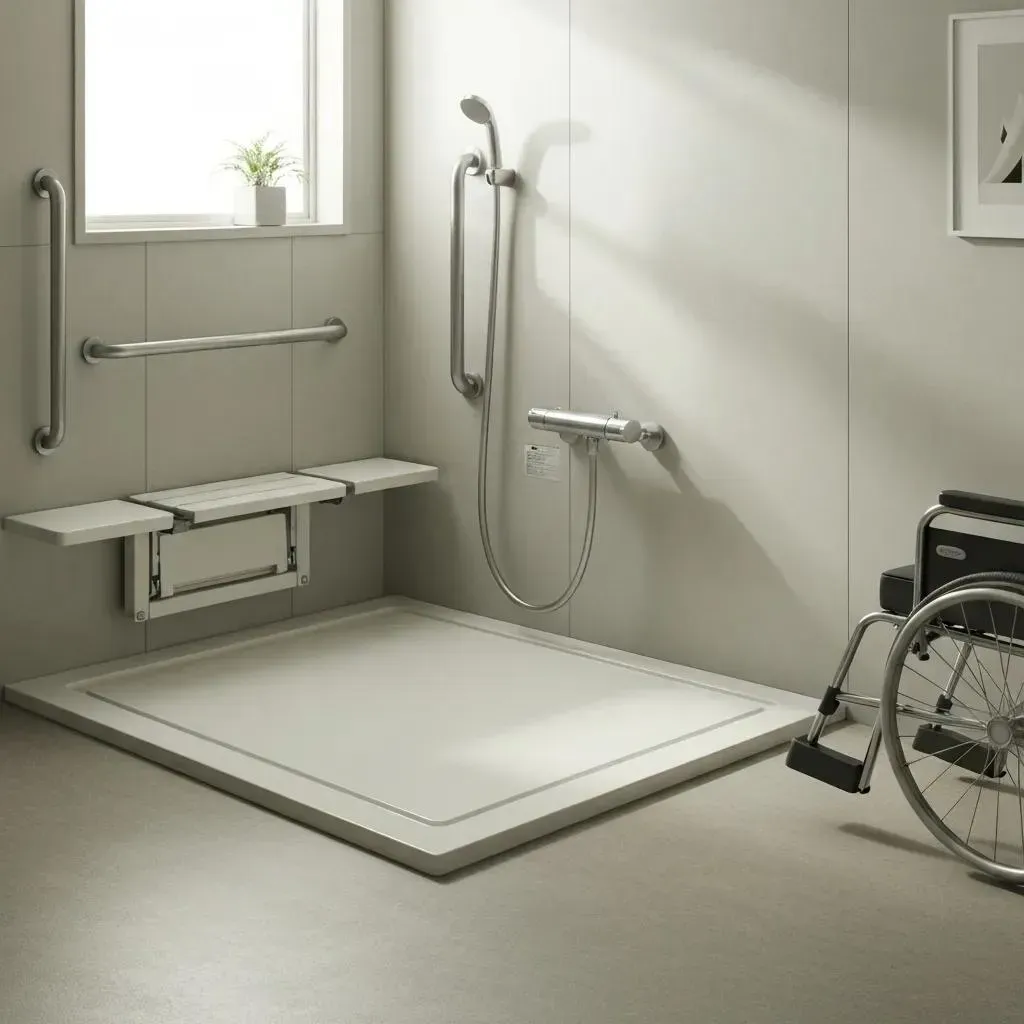Bathroom Sustainability Made Simple: Materials That Matter
Why Sustainable Bathroom Materials Are Essential for Modern Homes
The body content of your post goes here. To edit this text, click on it and delete this default text and start typing your own or paste your own from a different source.
Sustainable bathroom materials offer eco-friendly alternatives that reduce environmental impact while creating healthier, more efficient spaces. Here are the key categories to consider:
Top Sustainable Bathroom Materials:
- Flooring: Bamboo, cork, reclaimed wood, recycled content tiles
- Walls: Recycled glass tiles, low-VOC paints, ceramic from recycled content
- Countertops: Recycled glass, reclaimed wood, bamboo, concrete
- Fixtures: WaterSense-labeled toilets, low-flow showerheads, LED lighting
- Cabinetry: FSC-certified wood, formaldehyde-free materials
Your bathroom uses two-thirds of your household water and accounts for significant energy consumption through water heating and lighting. Traditional bathrooms often contain materials with volatile organic compounds (VOCs) and other harmful chemicals that affect indoor air quality.
The shift toward sustainable materials isn't just about environmental responsibility - it's about creating spaces that are healthier for your family and more cost-effective long-term. Modern low-flow toilets use just 1.28 gallons per flush compared to older models that waste up to 7 gallons, while LED lighting can save up to 80% on energy costs.
As Mike Martinez from Accountable Home Remodeling, I've helped Denver homeowners transform their bathrooms using sustainable materials that deliver both environmental benefits and exceptional performance. My experience shows that sustainable bathroom materials often outlast traditional options while improving indoor air quality and reducing utility bills.
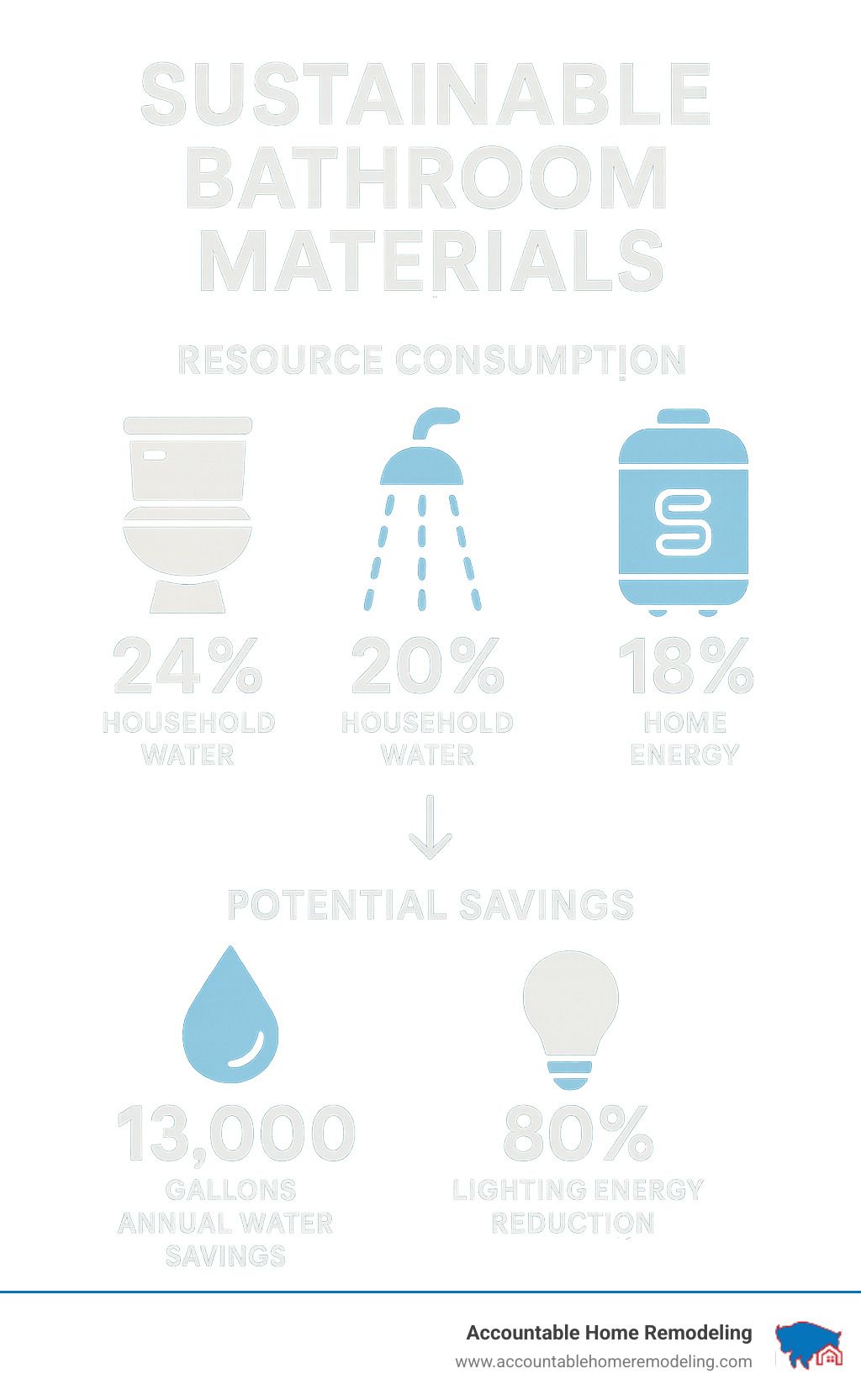
Why Go Green? The Compelling Benefits of a Sustainable Bathroom
Picture this: you're starting your day in a bathroom that not only looks amazing but also helps protect the planet while saving you money. That's the magic of going green with your bathroom renovation!
When you choose sustainable bathroom materials and eco-friendly practices, you're making a decision that ripples out in wonderful ways. You're protecting our environment by reducing demand for new resources and minimizing waste. You're conserving precious water and reducing energy consumption. And here's the best part - you're creating a healthier living space for your family while watching your utility bills shrink.
The environmental benefits alone are impressive. By selecting materials that are recycled, renewable, or responsibly sourced, you're helping reduce deforestation and pollution. But the benefits don't stop there. Your indoor air quality improves dramatically when you use low-VOC paints and non-toxic materials. Plus, formaldehyde-free cabinetry means you're not breathing in harmful chemicals every time you brush your teeth.
These smart choices also boost your home's value significantly. Today's buyers are actively seeking eco-friendly features, making your green bathroom a selling point that pays dividends. If you're interested in exploring more ways to make your entire home eco-friendly, check out our guide on Eco-Friendly Home Renovation Trends.
The result? A healthier living space that feels good, looks great, and supports both your family's wellbeing and environmental responsibility.
Reduced Water and Energy Bills
Let's talk about something we all love - saving money! Your bathroom is secretly one of the biggest resource hogs in your home, but that also means it has the biggest potential for savings.
Here's what might surprise you: toilets account for 24% of your home's water use, while showers use another 20%. Meanwhile, water heating consumes 18% of your home's energy. That's a lot of room for improvement!
The good news? Modern low-flow fixtures can dramatically slash these numbers. A new low-flow toilet uses just 1.28 gallons per flush compared to older models that guzzle up to 7 gallons. That translates to saving over 13,000 gallons of water and about $170 annually for the average household.The good news? Modern low-flow fixtures can dramatically slash these numbers. A new low-flow toilet uses just 1.28 gallons per flush compared to older models that guzzle up to 7 gallons. That translates to saving over 13,000 gallons of water and about $170 annually for the average household.
Dual-flush toilets take savings even further, letting you choose between a light flush for liquid waste and a full flush when needed. Some models save up to 68% more water than their older counterparts.
Don't overlook lighting either. LED lighting uses up to 80% less energy than old incandescent bulbs. When you combine water and energy savings, your bathroom essentially gives you a monthly rebate on your utility bills. Who doesn't want their renovation to pay them back?
A Healthier Home Environment
Beyond the money you'll save, choosing
sustainable bathroom materials is like giving your family's health a daily boost. Many traditional building materials contain
volatile organic compounds (VOCs) - invisible gases that can cause headaches, dizziness, and long-term health problems.
When you opt for low-VOC paints or zero-VOC paint, you're dramatically cleaning up the air your family breathes. No more chemical smells or off-gassing from walls and finishes.
Non-toxic materials throughout your bathroom mean cleaner air and reduced chemical exposure for everyone. This is especially important in bathrooms where humidity can intensify chemical off-gassing from traditional materials.
The result is better air quality and often allergy reduction for family members who are sensitive to chemicals. Your bathroom transforms from just a functional space into a true sanctuary where you can breathe easy - literally. It's amazing how much better you feel when your home isn't working against your health!
A Guide to Sustainable Bathroom Materials for Every Surface
When you're planning a bathroom renovation, every surface becomes a chance to make choices that matter.
Sustainable bathroom materials have come so far in recent years that choosing eco-friendly options no longer means sacrificing beauty or performance. In fact, many of these materials offer something special that traditional options simply can't match.
The key is looking for materials made from recycled content, renewable resources, or those manufactured with minimal environmental impact. What's exciting is how these materials often outperform their traditional counterparts in durability and bring unique aesthetics that can truly transform your space.
Take recycled glass tiles, for example - they create this gorgeous shimmer that makes your bathroom feel larger and brighter. Or consider bamboo, which brings such warmth and character while being incredibly tough. These aren't compromise choices; they're upgrades that happen to be better for the planet too.
If you're curious about the full range of options available, you can explore More info about Green Building Materials on our website.
Eco-Friendly Flooring Options
Your bathroom floor takes a beating every day - moisture, humidity, foot traffic, and the occasional dropped shampoo bottle. The good news? Some of the most
water-resistant and durable flooring options are also the most sustainable.
Bamboo is probably my favorite sustainable flooring option, and here's why: it's actually a grass that grows incredibly fast - some species shoot up 3 feet in a single day! You can harvest it every 3-5 years without harming the plant or the environment. When properly treated, bamboo naturally resists water and gives your bathroom this clean, modern look that works with almost any design style.
Cork might surprise you as a bathroom choice, but it's fantastic. The cork comes from the bark of oak trees, and here's the cool part - harvesting it doesn't hurt the tree at all. The bark just grows back! Cork feels soft and warm under your feet (no more cold morning shocks), it's naturally antimicrobial, and when sealed properly, it handles bathroom moisture beautifully.
If you love the idea of giving materials a second life, reclaimed wood brings incredible character to your bathroom. Every plank has its own story and unique grain patterns. Just make sure it's properly sealed and treated for the humid bathroom environment.
Recycled content tile opens up a world of creative possibilities. I've installed stunning mosaic tiles made from 98% post-consumer waste glass that look absolutely amazing. These tiles are perfect for wet areas and come in colors and patterns you won't find anywhere else.
For something completely different, concrete offers incredible versatility. You can stain it, polish it, or add texture to match your style. Plus, if you're considering radiant floor heating, concrete's thermal properties make it an excellent choice for energy efficiency.
Walls and Finishes: Choosing Sustainable Bathroom Materials
Your bathroom walls are where you can really let your personality shine while making responsible choices. The options here have improved dramatically over the past few years.
Recycled glass tiles create this beautiful, shimmering effect that makes your bathroom feel more spacious and bright. Many of these tiles contain high percentages of recycled material, so you're literally giving discarded glass a beautiful new purpose. They're also incredibly easy to clean and maintain.
Ceramic tiles remain a classic choice, but now many manufacturers offer options with significant recycled content. They perform exactly like traditional ceramic - durable, water-resistant, and easy to maintain - but with a much smaller environmental footprint.
When it comes to paint, switching to low-VOC or zero-VOC paints makes a huge difference in your indoor air quality. These paints have come so far that you won't notice any difference in coverage or color vibrancy, but you'll definitely notice the cleaner air in your bathroom.
For something truly unique, natural plaster creates this soft, organic feel that's completely different from paint. It's breathable and naturally beautiful, giving your bathroom walls a subtle texture that feels warm and inviting.
For more detailed information on these options, check out More info about Eco-Friendly Wall Finishes.
Countertops and Cabinetry: The Best Sustainable Bathroom Materials
Your vanity area is often the focal point of your bathroom, so this is where sustainable bathroom materials can really make a statement.
Reclaimed wood brings such incredible character to bathroom cabinetry. Every piece tells a story through its unique grain patterns and weathering. With the right finishes, reclaimed wood handles bathroom humidity beautifully while reducing demand for new timber.
If you prefer new wood, look for the FSC-certified wood label. This certification means the wood came from responsibly managed forests that protect wildlife and support local communities. You get the beauty of new wood with the peace of mind that it was sourced responsibly.
Bamboo works wonderfully for both cabinetry and countertops. Its rapid growth makes it incredibly sustainable, while its natural strength means your vanity will last for years. The clean lines of bamboo complement both modern and traditional bathroom designs.
Recycled glass countertops are absolutely stunning. You can customize them with different colors and textures to create exactly the look you want. Some materials, like Durat, contain up to 30% recycled plastic from medical and electronics industries and can be formed into seamless surfaces that stretch for yards without joints.
Recycled paper composite materials like PaperStone offer something completely different. Made from 50% to 100% recycled paper fused with non-petroleum resin, these surfaces have this warm, tactile feel that's nothing like traditional laminate. Many are FSC-certified too.
For a modern, industrial look, concrete countertops can be custom-poured to fit your exact space. They're incredibly durable, can be sealed to resist moisture, and offer this clean, minimalist aesthetic that's perfect for contemporary bathroom designs.
Beyond Surfaces: A Holistic Approach to Bathroom Sustainability
Choosing
sustainable bathroom materials for your floors, walls, and countertops is just the beginning of creating a truly eco-friendly space. The real magic happens when we think beyond surfaces and consider your bathroom as a complete ecosystem - one where water flows efficiently, lights shine smartly, and air circulates properly.
This holistic approach means integrating fixtures and systems that work together to maximize your environmental impact. When you're shopping for bathroom fixtures, look for the WaterSense label - it's like a seal of approval from the EPA that guarantees water efficiency without sacrificing performance. Similarly, ENERGY STAR certification on fans and other appliances ensures you're getting the most energy-efficient options available.
The beauty of this approach is that everything connects. Your low-flow showerhead works perfectly with your tankless water heater, while your LED lighting pairs beautifully with natural light from a strategically placed skylight. It's about creating a space where smart technology improves both your daily routine and your sustainability goals.
At Accountable Home Remodeling, I've seen how these integrated systems transform not just utility bills, but how families feel about their daily routines. There's something deeply satisfying about knowing your morning shower is using 40% less water while still delivering that perfect, invigorating spray. You can explore More info about our Services to see how we weave these sustainable principles into every renovation project we tackle.
Water-Saving Fixtures That Don't Compromise Performance
Let me be honest - the early days of water-saving fixtures gave "eco-friendly" a bad reputation. Those old low-flow toilets that required multiple flushes and showerheads that felt like a gentle mist rather than a proper rinse? Yeah, those days are long gone, and I'm thrilled about it!

Today's low-flow toilets are engineering marvels that use just 1.28 gallons per flush while delivering powerful, effective waste removal. The secret lies in advanced bowl design and improved flushing mechanisms that create better water flow patterns. I've installed hundreds of these units, and homeowners are consistently amazed at how well they perform while saving thousands of gallons annually.
Dual-flush toilets take efficiency even further by giving you options. Need a light flush for liquid waste? Press one button and use less water. Need the full power flush? Press the other button. It's simple technology that can save up to 68% more water than older models, and honestly, once you get used to having the choice, regular toilets feel wasteful.
Don't overlook the simple power of faucet aerators - these little devices mix air into your water stream, maintaining great pressure while using at least 30% less water. For about the cost of a fancy coffee, you can save 700 gallons per year per faucet. It's one of those upgrades that pays for itself within months.
Modern low-flow showerheads have come so far that many of my clients actually prefer them to their old water-wasting models. WaterSense-labeled units flow at 2 gallons per minute instead of the standard 2.5 GPM, but they're designed with sophisticated spray patterns that feel more luxurious, not less. Some even have multiple settings, so you can customize your shower experience while staying eco-friendly.
For deeper insights into how these fixtures can transform your daily routine and your utility bills, check out More info about Water-Saving Bathroom Fixtures. The EPA's WaterSense program also provides excellent resources for understanding the standards behind these efficient fixtures.
Energy-Efficient Lighting and Ventilation
The right lighting and ventilation can make your bathroom feel like a spa while dramatically reducing your energy footprint. It's amazing how these often-overlooked elements can completely transform both the ambiance and efficiency of your space.
LED lighting is the clear winner in bathroom applications. These bulbs use up to 80% less energy than traditional incandescent bulbs and last up to 25 times longer. But here's what I love most about modern LEDs - they come in every color temperature you can imagine. Want warm, cozy light for evening baths? Cool, bright light for morning routines? You can have both, often in the same fixture.
Adding dimmers to your LED setup gives you complete control over your bathroom's mood and energy use. Bright light for detailed tasks like shaving or applying makeup, softer light for relaxing baths. Motion sensors are particularly brilliant in bathrooms - they ensure lights only run when needed, automatically shutting off when you leave. No more wondering if you left the bathroom light on again!
Proper ventilation is crucial for preventing mold and maintaining air quality, but it doesn't have to be energy-intensive. ENERGY STAR fans use 48% less energy than conventional models while moving the same amount of air. The smart ones even have humidity sensors that automatically kick on when moisture levels rise and shut off when the air clears.
Natural light remains the most energy-efficient option of all. If you're doing a major renovation, consider adding skylights or larger windows. Not only do they reduce your daytime lighting needs, but they also make your bathroom feel more spacious and connected to the outdoors. There's something wonderful about brushing your teeth while natural light streams in - it's a small daily luxury that happens to be perfectly sustainable.
The key is creating layers of light that work together - natural light for daytime, efficient task lighting for detailed work, and ambient lighting for relaxation. When everything works in harmony, your bathroom becomes a space that's both beautiful and remarkably energy-conscious.
Frequently Asked Questions about Eco-Friendly Bathrooms
As a remodeling contractor in the Denver Metro Area, I get these questions almost daily from homeowners who are curious about going green but have some understandable concerns. Let me share the real answers based on what I've seen in hundreds of bathroom renovations.
Are sustainable materials as durable and stylish as traditional options?
Here's the thing that surprises most of my clients:
sustainable bathroom materials aren't just as good as traditional options - they're often better! I know it sounds too good to be true, but hear me out.
Take steel enamel bathtubs, for example. Companies like KALDEWEI back theirs with a 30-year guarantee. Compare that to a fiberglass tub that might crack or yellow in just a few years. When that steel tub finally reaches the end of its very long life, it's completely recyclable. That's what I call smart design.
The durability story continues with other materials too. Recycled glass tiles are incredibly hard-wearing - they handle moisture and daily use better than many traditional ceramics. Bamboo, when properly treated, laughs at moisture and wear. I've installed bamboo vanities that still look brand new after years of family life.
And let's talk style! The aesthetic range is honestly incredible. Want sleek and modern? Recycled glass and polished concrete deliver that contemporary look perfectly. Prefer something warm and rustic? Reclaimed wood brings character that you simply can't buy new. Looking for that spa-like retreat feeling? Bamboo and cork create exactly that vibe.And let's talk style! The aesthetic range is honestly incredible. Want sleek and modern? Recycled glass and polished concrete deliver that contemporary look perfectly. Prefer something warm and rustic? Reclaimed wood brings character that you simply can't buy new. Looking for that spa-like retreat feeling? Bamboo and cork create exactly that vibe.
The unique textures and stories behind these materials add depth that traditional options just can't match. Your bathroom becomes more interesting, not less.
Do low-flow toilets and showerheads actually work well?
I get it - everyone's heard horror stories about early low-flow fixtures that barely worked. But those days are long gone, and modern engineering has completely changed the game.
Today's low-flow toilets, especially those with the WaterSense label, use some pretty clever technology. They've got pressure-assisted systems and larger trapways that make 1.28 gallons do the work that used to take 3 or 5 gallons. I've installed hundreds of these, and honestly, they often flush better than the old water-wasters they replace.
The same breakthrough happened with showerheads. Modern low-flow models use advanced aeration and flow technologies that make 2 gallons per minute feel luxurious. The WaterSense standards ensure that performance isn't sacrificed for savings - you get both.
I always tell my clients: if a low-flow fixture doesn't perform well, it's not doing its job. The good ones work so well that you'll forget they're saving water until you see your utility bill.
What are the long-term cost benefits of a sustainable bathroom?
This is where the numbers get really exciting, and I love showing homeowners the math because it's so compelling.
Lower utility bills are the most obvious benefit. An average household saves over 13,000 gallons of water and about $170 annually just by upgrading to an efficient toilet. Add in a low-flow showerhead, and those savings grow. LED lighting cuts lighting costs by up to 80%. When you consider that water heating accounts for 18% of your home's energy use, an efficient water heater can reduce that by 24-34%.
Increased property value is becoming huge. As more buyers prioritize sustainability, eco-friendly bathrooms are major selling points. The smart bathrooms market is growing at 10.5% annually, which tells you where the market is heading. Buyers increasingly want homes with lower operating costs and healthier environments.
Durability reduces replacement costs in ways that might surprise you. That recycled glass countertop or steel enamel tub I install today? It's going to outlast conventional alternatives by years, sometimes decades. Less frequent repairs and replacements mean more money stays in your pocket.
Plus, depending on your utility provider, you might qualify for rebates or tax credits for WaterSense or ENERGY STAR certified products. These incentives can help offset your initial investment.
The bottom line? A sustainable bathroom pays you back through reduced expenses and increased home value, year after year. It's one of the smartest investments you can make in your home.
Transform Your Space with Sustainable Design
What an exciting journey we've taken together through
sustainable bathroom materials! From water-saving fixtures that actually work brilliantly to gorgeous recycled glass countertops that sparkle like jewels, we've found that going green doesn't mean sacrificing style or performance. In fact, it often means getting both in spades.
The beauty of sustainable design lies in those small changes that create big impacts. When you choose that low-VOC paint over the traditional option, you're not just protecting your family's health – you're contributing to cleaner air for everyone. When you install that dual-flush toilet, you're not just saving water – you're modeling environmental responsibility for your kids and neighbors.
Your bathroom change becomes a daily reminder of your commitment to healthier living and environmental stewardship. Every morning when you step onto that beautiful cork flooring or turn on those energy-efficient LED lights, you're living your values. And honestly, there's something pretty wonderful about a space that makes you feel good in every possible way.
At Accountable Home Remodeling, we've seen how these sustainable choices transform not just bathrooms, but entire homes and families. Our work throughout the Denver Metro Area – from the busy neighborhoods of Denver and Aurora to the scenic communities of Boulder and Longmont, and everywhere in between including Broomfield, Westminster, Thornton, Northglenn, Arvada, and Lakewood – has shown us that homeowners are hungry for renovations that reflect their values.
We believe your home should tell your story, and increasingly, that story includes caring for our planet and our health. With our commitment to quality craftsmanship, transparent communication, and personalized designs, we're here to help you create a bathroom that's as unique as you are – and as sustainable as you want it to be.
Ready to turn your bathroom into a beautiful, efficient, and healthy sanctuary? Let's chat about how we can bring your sustainable vision to life.
Start your sustainable bathroom renovation today and find just how rewarding eco-friendly remodeling can be.

